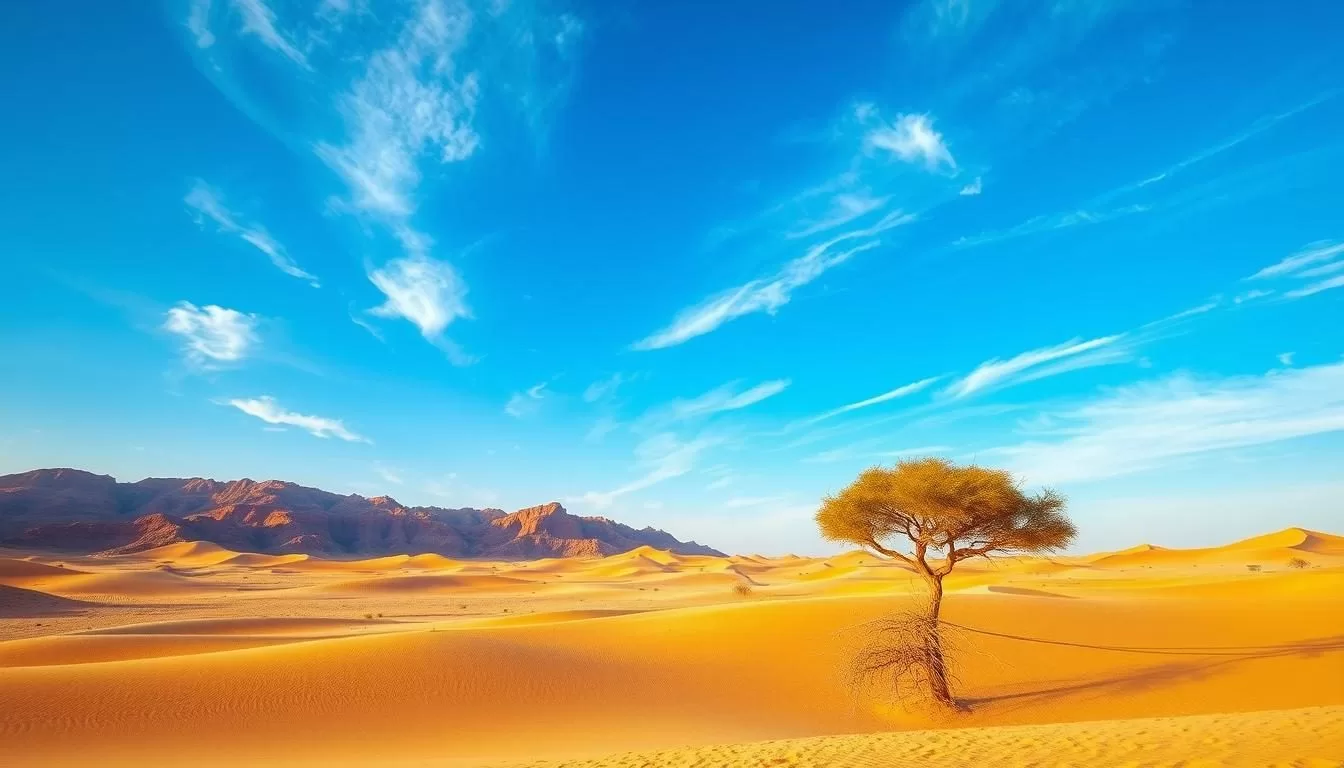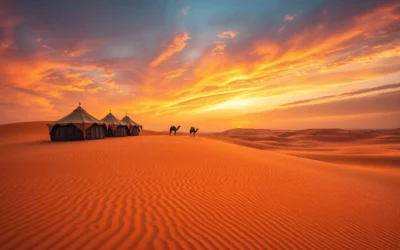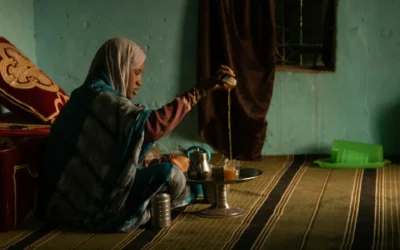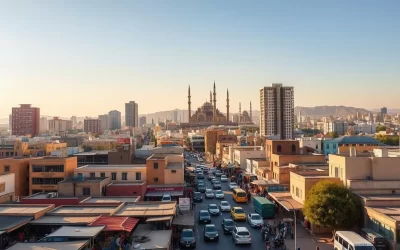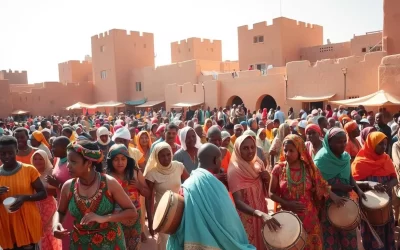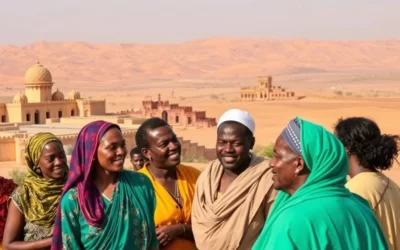✓ Accommodations✓ Flights✓ Rental Cars✓ Tours & Activities
Planning a trip to Mauritania requires a deep understanding of its unique and often extreme climate patterns. You’ll discover a fascinating destination where vast desert landscapes meet the Atlantic coast, creating diverse weather conditions.
Understanding the seasonal variations is crucial to choosing the best time to visit. This comprehensive guide will walk you through the climate patterns, highlighting the optimal months for a comfortable exploration of Mauritania’s ancient cities and stunning desert scenery.
By knowing what to expect, you can pack accordingly and make the most of your trip. Whether you’re looking to explore the desert or enjoy the coastal regions, this guide will help you plan a weather-savvy trip.
Understanding Mauritania’s Unique Climate
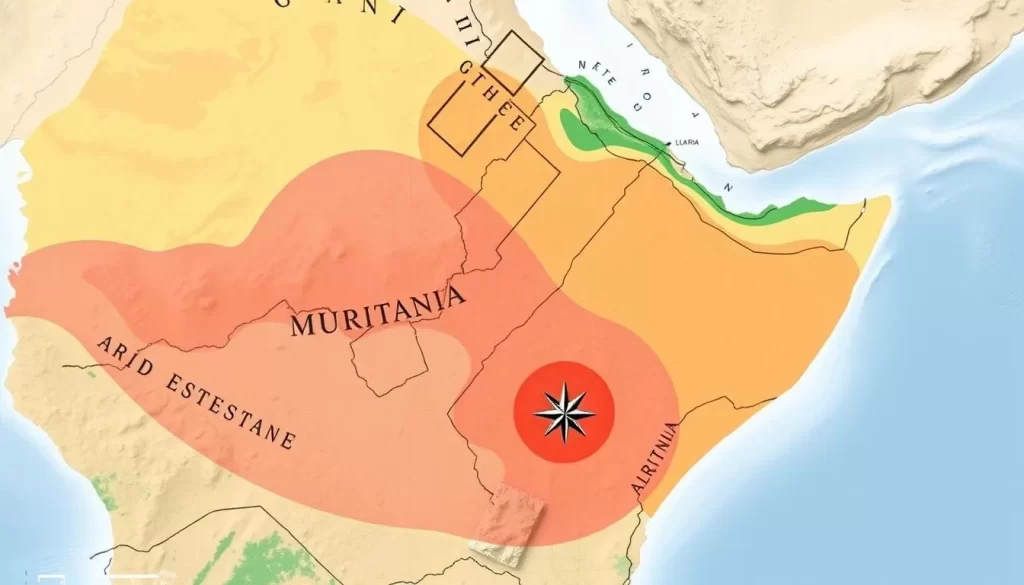
Understanding Mauritania’s climate requires exploring its varied climate zones and regional weather patterns. The country’s diverse geography, ranging from the Atlantic coast to the Sahara Desert, significantly influences its climate.
Desert North vs. Semi-Desert South
Mauritania’s climate varies greatly from north to south. The northern parts are dominated by the Sahara Desert, characterized by extreme heat and arid conditions. In contrast, the southern regions are semi-desert, with slightly more rainfall and vegetation.
Coastal Influences and Wind Patterns
The Atlantic coast of Mauritania experiences a moderating effect from ocean breezes, creating a more comfortable temperature zone. Wind patterns play a crucial role, with westerly winds bringing cooler temperatures and easterly winds increasing the heat. These winds can also whip up sand, affecting visibility and comfort.
- Mauritania’s Atlantic coastline experiences a moderating effect from ocean breezes, creating a narrow band where temperatures are generally more comfortable than in the interior.
- Coastal areas like Nouakchott and Nouadhibou benefit from cooling sea winds that provide welcome relief from the intense heat.
- Wind patterns play a crucial role in Mauritania’s climate, with westerly winds from the Atlantic bringing cooler temperatures.
- These winds frequently carry sand and dust, creating challenging conditions.
- The coastal influence diminishes rapidly as you move inland.
Winter Wonders: December to February
From December to February, Mauritania enjoys a pleasant winter season, making it an attractive destination for travelers seeking a warm and culturally rich experience. The mild temperatures and clear skies create an ideal environment for exploring the country’s vast desert landscapes and participating in its vibrant cultural events.
December: Mild Temperatures and Cultural Festivals
December marks the beginning of Mauritania’s winter season, characterized by mild temperatures ranging from 18-25°C. This comfortable climate allows visitors to enjoy outdoor activities such as desert exploration and visiting ancient towns like Chinguetti. December is also a great time to experience Mauritania’s cultural festivals, which showcase the country’s rich heritage.
January-February: Perfect Weather for Desert Exploration
January and February continue the excellent weather conditions that began in December, making them perfect months to visit Mauritania. With comfortable temperatures and dry conditions, these months are ideal for desert adventures and exploring remote sites like the ancient libraries of Chinguetti or the monoliths of Ben Amira. The dry season ensures reliable road conditions, making overland travel hassle-free. In February, visitors can also experience the Nouakchott International Book Fair and the traditional Imraguen fishing festival, adding cultural richness to their visit.
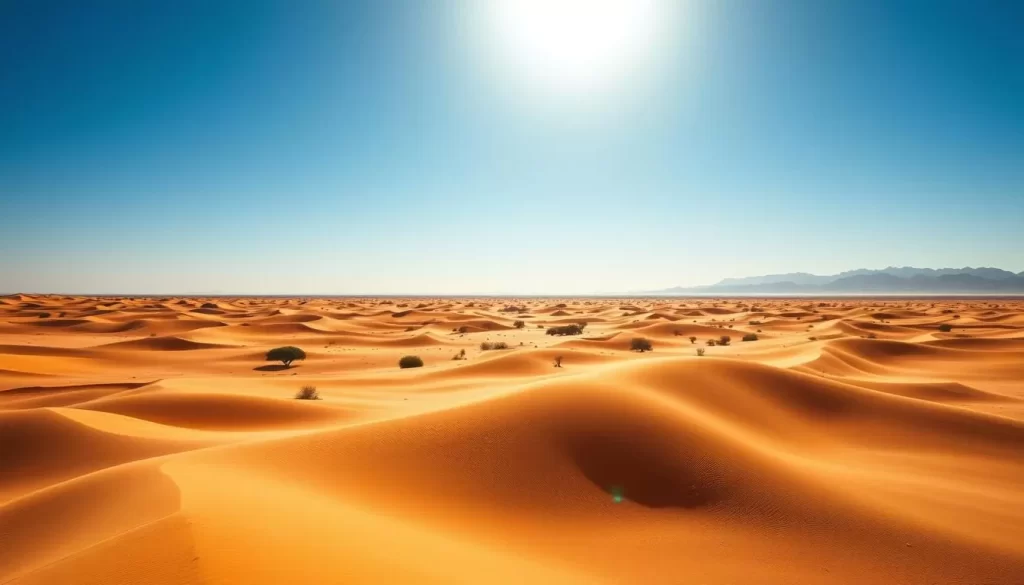
Spring Transition: March to May
As winter fades, Mauritania transitions into spring, bringing a mix of comfortable temperatures and clearer skies. This period, from March to May, is a transitional time, offering a unique opportunity to experience Mauritania with fewer tourists.
Rising Temperatures and Clear Skies
During the spring, temperatures begin to rise, and the skies are generally clear. The early spring months, particularly March, offer reasonably comfortable conditions, similar to winter. The coastal regions are particularly pleasant during this time, as Atlantic breezes help moderate the rising temperatures.
Last Chance Before Summer Heat
May represents your last chance to visit Mauritania before the intense summer heat sets in. If you’re planning a spring trip, prioritizing March and April will provide a more comfortable experience. Here’s a brief overview of what to expect during the spring months:
| Month | Temperature | Weather Conditions |
|---|---|---|
| March | Mild | Clear skies, comfortable temperatures |
| April | Moderate | Rising temperatures, generally clear |
| May | Hot | Preview of summer heat, clear skies |
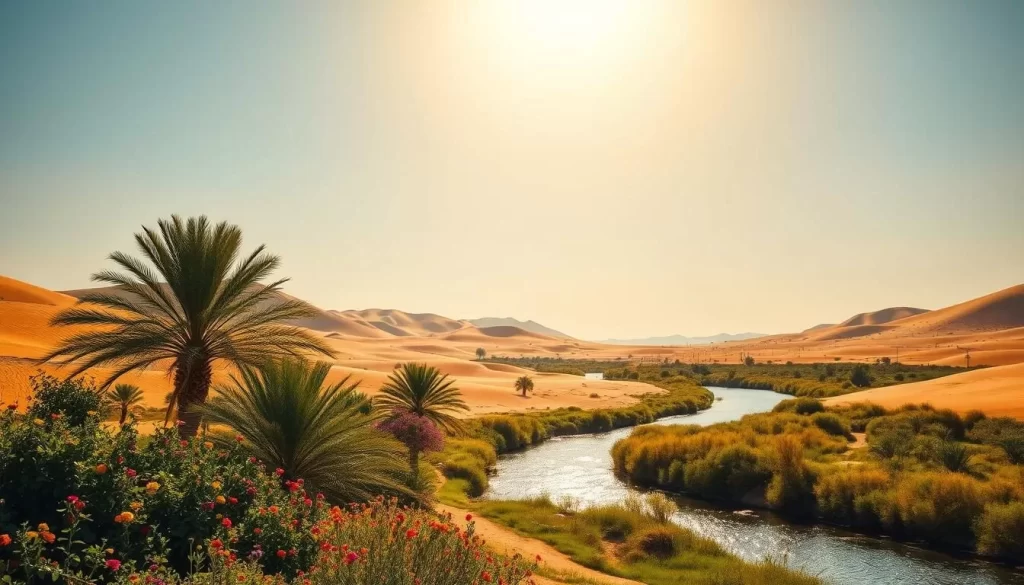
Summer Challenges: June to August
The summer months in Mauritania are characterized by extreme heat and varied regional weather patterns. This period, from June to August, poses significant challenges for travelers.
During the peak summer months, the heat can be overwhelming, especially in the desert regions. Hotel rooms can become unbearably hot, making a good night’s sleep difficult unless you choose a well-equipped hotel in cities like Nouakchott.
Peak Heat and Monsoon Effects
The extreme heat is compounded by the effects of the monsoon season in the south, while the northern desert regions experience dry heat with virtually no rainfall. The Atlantic breeze along the coast provides some relief in areas like Nouakchott and Nouadhibou.
Regional Variations in Summer Weather
Summer weather conditions vary significantly across Mauritania’s diverse regions. Coastal areas benefit from the Atlantic sea breeze, moderating temperatures somewhat. In contrast, the southern regions face both high temperatures and monsoon effects. If you must visit during summer, the northern coastal regions offer relatively more tolerable conditions.
- The northern desert regions experience extreme dry heat.
- Coastal areas like Nouakchott benefit from Atlantic breezes.
- Daily life adapts to the extreme heat, with activity peaking during cooler mornings and evenings.
When planning your visit, consider the time of day and the regional weather variations to make the most of your trip. The streets are generally empty during the midday heat, coming alive again at sunset.
Mauritania: Best Months for a Weather-Savvy Trip
To make the most of your Mauritanian adventure, consider the best time to visit. The country’s unique climate makes certain months more favorable than others.
November-December: The Optimal Window
November and December offer a great combination of mild temperatures and cultural experiences, making them an ideal time to explore Mauritania. With comfortable weather, you can enjoy outdoor activities like desert exploration and visiting historical sites.
January-February: Runner-Up Season
January is the perfect time to visit Mauritania due to its mild and pleasant weather, with average temperatures ranging from 18-25°C. You can enjoy the Nouakchott International Book Fair in February, showcasing Mauritanian literature and culture. 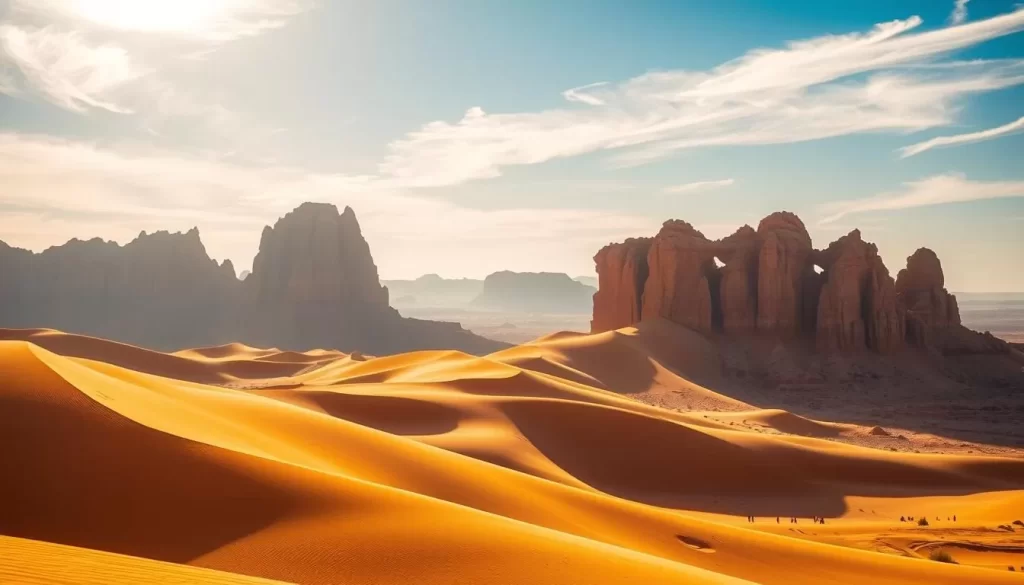
The dry season during these winter months ensures clear skies and excellent visibility, ideal for desert exploration and photography. While temperatures gradually climb by late February, the period remains within the recommended travel window.
What to Pack for Different Seasons
To enjoy your time visit Mauritania, understanding what to pack for different seasons is key. The country’s diverse climate means that your luggage should be tailored to the specific weather conditions you’ll encounter.
Winter Essentials
During the winter months, Mauritania experiences mild temperatures, making it an ideal time for cultural festivals and desert exploration. You should pack layers for cooler evenings, comfortable clothing for daytime activities, and sturdy footwear for desert adventures. Don’t forget to include essentials like sunscreen and a hat for outdoor protection.
Summer Survival Kit
In the summer, Mauritania faces extreme heat, making your packing list critical for comfort and safety. You’ll need ultra-lightweight, loose-fitting clothing that provides sun protection while allowing air circulation. Hydration equipment is also crucial; consider a high-capacity water bottle, electrolyte supplements, and a portable water purifier if you’ll be traveling away from the sea. Other essentials include cooling towels, broad-spectrum SPF50+ sunscreen, and quality sunglasses with UV protection.
| Season | Essential Items | Tips |
|---|---|---|
| Winter | Layers, comfortable clothing, sturdy footwear, sunscreen, hat | Pack for cooler evenings and desert adventures |
| Summer | Ultra-lightweight clothing, hydration equipment, cooling towels, SPF50+ sunscreen, UV protection sunglasses | Stay hydrated, protect yourself from the sun, and consider a portable water purifier |
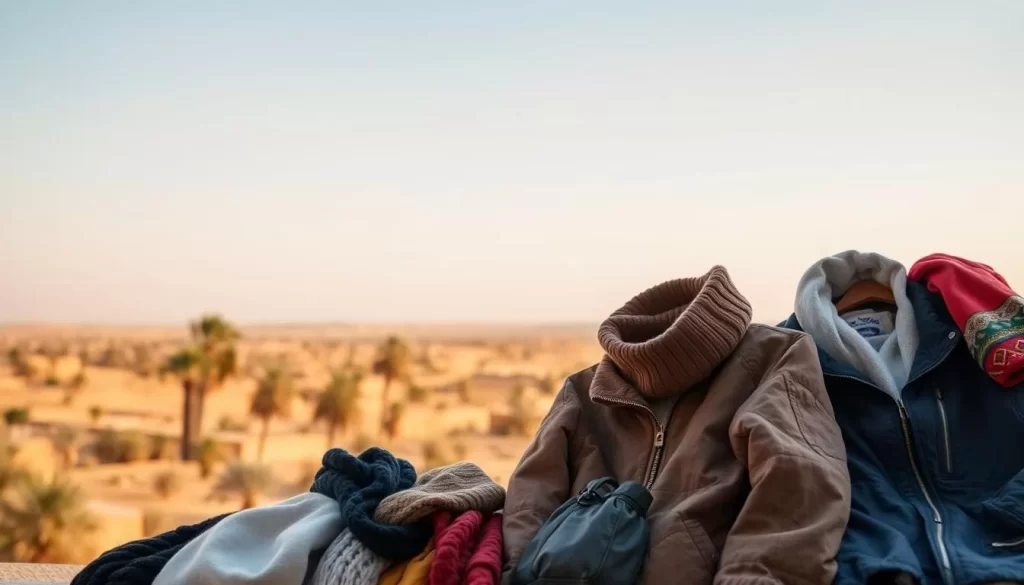
Planning Your Weather-Perfect Mauritanian Adventure
Mauritania’s unique climate is now your guide to an unforgettable journey. With the best time to visit being from November to February, you can enjoy the country’s vast desert landscapes and cultural treasures in comfort. To visit Mauritania successfully, plan your itinerary around the weather, prioritizing regions like Nouakchott and Nouadhibou during the cooler months. This guide helps you navigate the country’s climate, ensuring a safe and enjoyable trip in the best way possible throughout the year.
The above is subject to change.
Check back often to TRAVEL.COM for the latest travel tips and deals.
